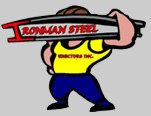Steel Estimating Solutions
Attention Steel Erectors
Learn how over 400 Steel Erectors have revolutionized the way they estimate. Take your estimating department digital with the Steel Erection Bid Wizard. Only software on the market made for Erectors by an Erector.
🚀 CAD-integrated BIM Takeoff: Best Tools, Workflow, and Automation Insights
🏗️ 1. Introduction to CAD-integrated BIM Takeoff
In today’s fast-paced construction industry, CAD integrated BIM takeoff has become a critical solution for achieving accurate, efficient, and automated quantity estimation. By combining 2D CAD drawings with data-rich BIM models, construction professionals can streamline takeoff workflows, reduce errors, and produce cost-effective results.
What Is BIM Quantity Takeoff?
BIM quantity takeoff refers to extracting quantities—like areas, lengths, volumes, and material specs—from a BIM model. Traditionally, this required manual calculations based on paper or 2D drawings. But with 3D BIM software, every building component—wall, beam, duct, or pipe—is embedded with measurable data.
Key Benefits Include:
📐 Increased accuracy
⏱️ Reduced estimating time
🔄 Dynamic updates with design changes
🧾 Integration with cost estimation (5D BIM)
🔗 How CAD and BIM Work Together for Takeoff
Many project teams still begin with 2D CAD plans—created in tools like AutoCAD, MicroStation, or BricsCAD. These files are rich in geometry but lack structured data. By importing these into BIM software like Revit or Navisworks, estimators can enhance them with data and extract accurate takeoffs using model-based automation.
For example:
A simple wall line in CAD becomes a fully specified BIM wall with length, height, thickness, and material info.
Multiple CAD layers can be categorized into systems (e.g., electrical, structural) and linked with BIM schedules.
🎯 2. Benefits of Integrating CAD and BIM for Takeoffs
The hybrid CAD-BIM takeoff process bridges the gap between traditional and modern workflows. Let’s dive into the top benefits:
✅ Improved Accuracy and Reliability
CAD-based takeoffs often suffer from:
Human errors in measuring
Misinterpretation of layers
Redundancy in drawings
CAD-integrated BIM takeoff solves these by:
Automating measurements from parametric models
Ensuring quantities are tied to actual objects, not just lines
Reducing dependency on individual estimators’ interpretation
⏱️ Time Savings and Efficiency Gains
Time saved using automated BIM quantity takeoff is substantial. Industry studies show that model-based takeoff is:
5x faster than manual CAD measurement
Can reduce preconstruction time by up to 30%
🔁Enhanced Collaboration and Workflow
When CAD and BIM are integrated:
Designers and estimators work on the same model
Design revisions update quantities in real-time
Multiple stakeholders (MEP, architecture, structure) can collaborate through linked models
This supports a connected construction ecosystem, aligning with the goals of 5D BIM and integrated project delivery (IPD).
🔧 3. CAD to BIM Quantity Takeoff Workflow Explained
Understanding the workflow from a CAD drawing to a BIM-based takeoff model is essential. Let’s walk through it:
🛠️ Step 1: Prepare Your CAD Drawings
Ensure files are in compatible formats (e.g., DWG, DXF, DGN)
Clean up layers, remove duplicates, and resolve block references
Set up standard layer naming to ease BIM mapping
🔁 Step 2: Import into BIM Software
Most BIM platforms allow direct import of CAD files:
In Revit, CAD files can be linked or imported
Tools like Navisworks and Assemble Systems offer enhanced CAD aggregation features
🧠 Step 3: Convert to BIM Elements
This is where the magic happens. CAD elements like lines, arcs, and polylines are converted into:
Walls, floors, beams (architectural & structural)
Pipes, ducts, conduits (MEP)
Rooms and spaces (for area takeoff)
You can either model over the CAD or use semi-automatic conversion tools depending on your software.
📊 Step 4: Extract Quantities
Once the BIM model is created or enriched:
Use schedules, tags, and filters to pull quantities
Export to Excel, CostX, or estimating software
Quantities can be filtered by material, location, or phase
🧩 4. Key Components in a Hybrid CAD-BIM Takeoff Process
The hybrid approach—leveraging both 2D CAD and 3D BIM—offers flexibility and adaptability.
🖼️ Integration of 2D and 3D Views
Use 2D CAD plans for spatial layout and reference
Overlay BIM components to verify positioning and dimensions
Extract takeoffs in both 2D (area, count) and 3D (volume, assembly)
🔎Visualizing Quantities
In platforms like Navisworks, you can:
Color-code elements based on quantities or costs
Isolate systems (e.g., HVAC, plumbing)
Link model components to itemized takeoff reports
This visual feedback is invaluable during reviews and value engineering sessions.
🛠️5 Top Tools for CAD-based BIM Quantity Takeoff
Here are the most widely used platforms that support CAD to BIM quantity extraction:
| 🔧 Tool | 🧮 CAD Support | 🧱 BIM Integration | ⚙️ Key Features | 💰 Pricing |
|---|---|---|---|---|
| Autodesk Revit | DWG, DXF | Full | Model scheduling, filtering | ~$335/month |
| Navisworks Manage | DWG, NWC, IFC | Full | 4D/5D takeoff, clash detection | ~$125/month |
| Bluebeam Revu | PDF, CAD | Partial | 2D takeoff, custom markup | $349 (one-time) |
| PlanSwift | DWG, PDF | Plugins available | Drag-and-drop takeoff | $1,595/license |
| BIM 360 Takeoff | DWG, Revit | Full Cloud BIM | Collaborative 2D/3D takeoff | ~$1,000/year |
📊 6. Comparing BIM Takeoff Software Solutions in 2025
Choosing the right BIM quantity takeoff tool depends on your project scale, existing workflows, budget, and level of automation required. Below is a detailed comparison of top solutions.
🆚 Feature Comparison Table
| 🛠️ Software | ✅ CAD Format Support | 🧱 BIM Compatibility | 🔄 Automation | 🧑💻 Use Case |
|---|---|---|---|---|
| Revit + Navisworks | DWG, DXF, IFC | Native BIM | High | Large commercial projects |
| BIM 360 Takeoff | DWG, RVT | Cloud BIM | High | Remote collaboration |
| PlanSwift | DWG, PDF | Partial via plugins | Medium | Trade contractors |
| Bluebeam Revu | PDF, DWG | Limited BIM | Low-Medium | 2D estimators |
| Assemble Systems | DWG, NWD | Strong with Revit | High | Preconstruction analytics |
| Trimble Quantm | Civil CAD | High | Very High | Infrastructure (roads, rail) |
💲 Pricing Breakdown (2025)
| Tool | Monthly Pricing | Yearly Estimate | Notes |
|---|---|---|---|
| Revit + Navisworks | ~$460 | ~$5,500 | Bundled or separate |
| BIM 360 Takeoff | ~$85 | ~$1,000 | Cloud-based |
| PlanSwift | One-time $1,595 | – | Add-ons extra |
| Bluebeam Revu | One-time $349 | – | Basic 2D markup |
| Assemble Systems | Custom quote | Enterprise | For teams |
⚙️ 7. Automated Quantity Takeoff: CAD-BIM Integration Advantages
As projects get more complex, manual takeoff methods can’t keep up. Enter automated CAD-integrated BIM takeoff, which uses AI, data extraction rules, and model intelligence to accelerate workflows.
Automation Examples
Revit: Generates live quantity schedules with material and cost parameters.
Navisworks: Links time and cost to quantities for 5D BIM takeoff.
Assemble: Filters model elements by location, system, or phase instantly.
📌Real-time Change Tracking
Design changes happen often. With CAD-BIM automation:
Model updates automatically revise quantity reports.
Change logs are maintained.
Estimators receive alerts on cost-impacting changes.
💡Why It Matters
No more rework due to outdated takeoffs.
Estimators and designers can work in sync.
Saves weeks of time on large projects.
🏢 8. CAD-enabled BIM Quantity Estimation Use Cases
🏗️ Commercial Projects
High-rise buildings and malls often start in AutoCAD.
By importing DWG files into Revit, estimators can extract:
Floor areas
Wall lengths
MEP systems
Great for early-stage budgeting.
🏘️ Residential Construction
Home builders use 2D CAD plans for multiple unit designs.
BIM quantity takeoff from CAD enables rapid replication of:
Flooring
Plumbing
Roof materials
🛤️ Infrastructure & Civil Works
Roads, railways, and tunnels are often modeled in Civil 3D.
Using Trimble Quantm or Navisworks, teams can:
Calculate cut/fill volumes
Link geometry with material types
Estimate costs at scale
⚠️ 9. Common Challenges in CAD-BIM Takeoffs
Even with all the tech advantages, pitfalls exist.
🧹Data Cleanup from CAD Files
Duplicate lines
Unsupported layers
Missing scale info
Before importing into BIM, CAD drawings must be audited.
🔄Compatibility Issues
Older CAD files may not align with current BIM standards.
Workarounds like DWG-to-IFC conversion may cause data loss.
🔐Security & Version Control
Model changes in a hybrid setup need strict version control.
BIM 360 and Trimble Connect offer cloud-sync with logs and permissions.
📈 10. BIM-to-BIM Integration and Cost Estimation
🔗 BIM Model Linking Across Platforms
Projects now involve multiple disciplines, each with separate BIM models. A CAD-integrated BIM takeoff supports:
Cross-model references (architectural, structural, MEP)
Unified quantity databases
Federated model reviews
💰 5D BIM Integration
5D BIM = 3D geometry + time (4D) + cost (5D)
When CAD models are converted to BIM, they can:
Be linked with cost databases
Generate automated cost simulations
Provide insights for budgeting and procurement
🧠 11. Best Practices for Digital Quantity Takeoff from CAD and BIM
✅ CAD File Preparation Checklist
| Task | Details |
|---|---|
| Clean layers | Remove unused, rename consistently |
| Set origin | Align origin point with BIM base point |
| Simplify geometry | Use polylines, avoid overkill detail |
BIM Takeoff Optimization Tips
Use shared parameters for consistent scheduling
Define model element levels (e.g., Finish vs Rough Wall)
Train your team on tools like Dynamo, Navisworks Quantification, or Assemble Filters
12. Future of Construction Takeoff Using CAD and BIM
☁️Cloud-Based Platforms
Autodesk Construction Cloud, Trimble Connect, and Bentley SYNCHRO offer:
Anytime access to models
Centralized quantity takeoff
Integration with ERP systems like SAP
🧠AI-Driven Takeoff & Costing
The future is predictive estimation. AI tools will:
Suggest material alternates
Warn about budget risks
Learn from historical project databases
✅ Conclusion: Why CAD-integrated BIM Takeoff Is the Future of Construction Estimating
The move from 2D CAD drawings to automated BIM takeoffs isn’t just a digital upgrade—it’s a leap into a smarter, faster, and more collaborative construction future.
By embracing CAD-integrated BIM takeoff workflows, professionals can:
🚀 Increase productivity
🧮 Achieve accurate cost forecasting
🤝 Align teams from design to delivery
Whether you’re using AutoCAD, Revit, PlanSwift, or Navisworks, the goal is the same: accurate, efficient, and automated estimation.
🌐Visit My Site for More BIM and CAD Insights
If you found this guide on CAD-integrated BIM takeoff helpful, there’s so much more waiting for you!
👉 Visit my site for:
🛠️ Step-by-step tutorials on BIM takeoff tools
💡 Pro tips for CAD-to-BIM automation
📥 Free resources for estimators, engineers, and BIM modelers
📊 Tool comparisons, templates, and industry insights
🎯 Whether you’re a construction pro, quantity surveyor, or BIM beginner, I’ve got content that fits your workflow.
🔗 👉 Click here to visit my site and supercharge your BIM takeoff skills!
Let’s build smarter—together.
Only Software On Market Created For Steel Erectors By A Steel Erector
Steel Erection Bid Wizard
Steel Erection Bid Wizard is a fully functional steel erection estimating software package. Estimate your bids more accurately and faster than ever before.
Learn More About The Project Management Wizard
Project Management Wizard
Track bids—and watch costs and profits—in real time.
What if you could start every day knowing where your costs are on a project?
Learn More About The Project Management Wizard
Testimonials
What our Client Says
See what over 250 steel erectors are saying about how our software has transformed their estimating process!
We've used Steel Erection Bid Wizard since 2013, and it effectively captures the scope of work. Vince provides excellent support, resolving any issues promptly. Highly recommended!




